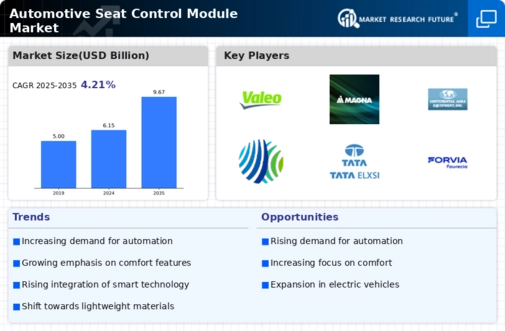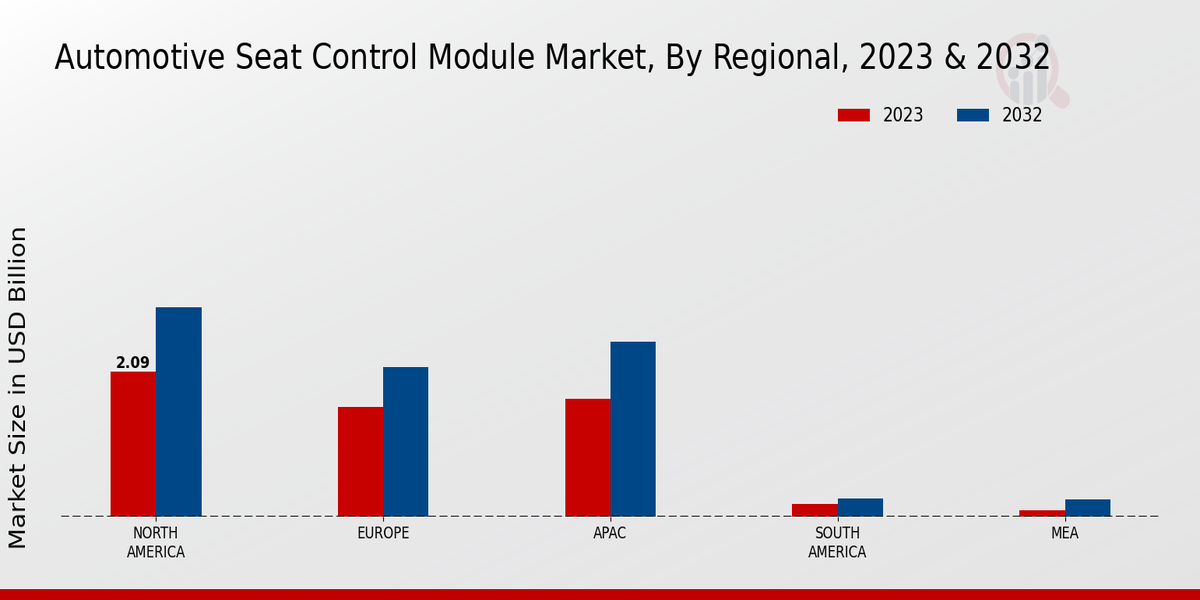The Global Automotive Seat Control Module Market has seen significant growth and innovation in recent years, driven by the increasing demand for advanced vehicle comfort and customization features.
As automotive manufacturers strive to enhance the driving experience, seat control modules have emerged as crucial components that provide functionality such as electric seat adjustments, heating, cooling, and memory settings.
The market is characterized by a competitive landscape where various players are striving to capture market share through technological advancements and product differentiation.
Companies are focusing on integrating smart technology and improving user interface capabilities, which has intensified competition and encouraged collaborative ventures among firms to innovate and meet changing consumer preferences.
The market's potential for growth is further fueled by trends toward increased vehicle electrification and enhanced digitalization, positioning seat control modules as vital elements in modern vehicles. Valeo SA holds a prominent position in the Global Automotive Seat Control Module Market, leveraging its extensive experience and innovative capabilities.
The company is recognized for its commitment to producing high-quality automotive components, including technologically advanced seat control modules that integrate seamlessly into various vehicle platforms. Valeo SA's strengths lie in its robust research and development efforts, focusing on cultivating smart technologies that enhance user comfort and convenience.
The company's strong relationships with major automotive manufacturers enable it to understand market needs and rapidly adapt its offerings, catering to evolving customer demands. Furthermore, Valeo SA's commitment to sustainability and energy efficiency in its product designs further strengthens its market presence and aligns with the global trends toward eco-friendly vehicle solutions.
Denso Corporation has also established a significant foothold in the Global Automotive Seat Control Module Market, providing innovative solutions that enhance vehicle comfort and functionality. The company is celebrated for its engineering expertise and focus on developing cutting-edge automotive technologies, including highly reliable seat control modules equipped with advanced features.
Denso Corporation's strengths in this market stem from its continuous investment in research and development, allowing for the incorporation of intelligent systems that improve user experience. With a collaborative approach, the company works closely with automotive manufacturers to tailor its seat control solutions to meet specific requirements, thereby enhancing overall vehicle performance.
Additionally, Denso's commitment to high-quality standards and integrating electronic components into vehicle systems positions it as a competitive player in the ever-evolving landscape of automotive seating technology.


















